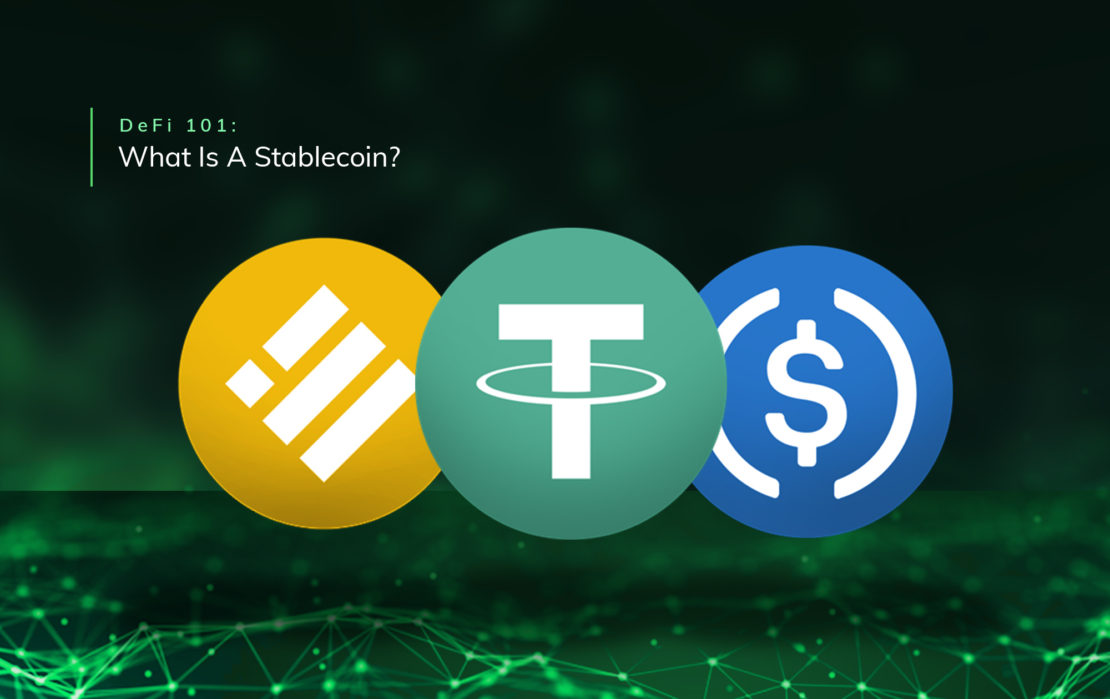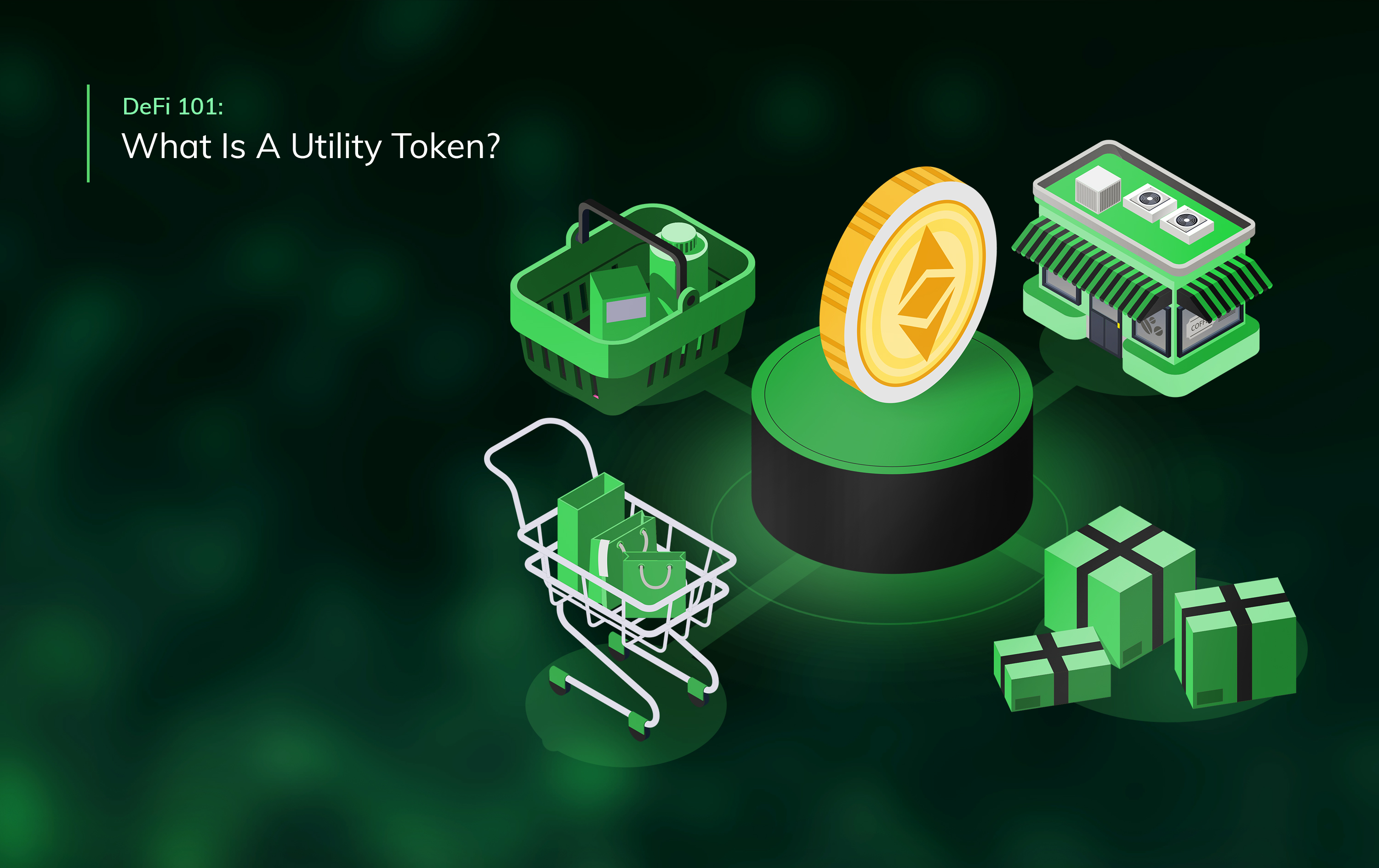DeFi 101: What Is A Stablecoin?
A stablecoin is a type of digital currency that pegs its value to a reserve asset (like the US Dollar, British Pound, or Euro). Stablecoins exist to help decentralised applications mitigate the volatility of unpegged cryptocurrencies.
——
When Satoshi Nakamoto invented Bitcoin, he envisioned the cryptocurrency as a peer-to-peer electronic cash system.
His dream may yet come to pass. But if the last decade has taught us anything, it’s that Bitcoin isn’t a suitable replacement for cash. That’s because its price is wildly volatile, rising and falling by upwards of 50% in weeks.
And while volatility is great for traders, only a handful of people would ever buy two pizzas with Bitcoin. More importantly, very few retail businesses would willingly accept such a volatile asset as payment.
This is why stablecoins now exist. They offer all the benefits of peer-to-peer electronic cash (fast, secure, low-cost transactions).
And as the name suggests, they avoid the wild volatility.
What is the point of stablecoins?
It’s very rare for an established fiat currency to lose 1% of its value in a few hours, which gives people the confidence to use fiat in their everyday lives.
If we want people to use cryptocurrency every day, too, we need a coin that behaves in the same way; enter, stablecoins. As stablecoins track an established reserve asset, their value stays more or less constant over time.
And the dynamic gives both individuals and corporations the confidence to adopt them in their daily operations. This makes stablecoins an essential part of both the crypto and, in time, mainstream economies.
Stablecoins have also become an essential crypto onramp for many investors, injecting crucial liquidity into a growing decentralised finance ecosystem.
Let’s be straight: without stablecoins, decentralised finance could not exist.
The three types of stablecoin
Stablecoins use different mechanisms for pegging their value to a reserve asset.
The most proven methods are fiat-collateralized and crypto-collateralized stablecoins. These use a basket of reserve assets to back up the value of the circulating supply. Then there are algorithmic stablecoins, which control supply using computer code.
Experience has shown us that some mechanisms are more effective than others. Here are the characteristics of each one.
1. Fiat-collateralized stablecoins
Fiat-collateralized stablecoins use a fiat currency reserve to maintain the coin’s value. They can hold US Dollars, gold bullion, or any other stable asset; whatever the reserve, the collateral exists to preserve the peg.
USD Coin (USDC) and Tether (USDT) are the two biggest USD-pegged stablecoins. Paxos Gold (PAXG) holds a reserve of real-life gold bullion.
2. Crypto-collateralized stablecoins
Crypto-collateralized stablecoins are the same as fiat-collateralized stablecoins, only they rely on crypto in place of fiat reserves.
As we’ve already said, cryptocurrency is volatile. So these stablecoins are often over-collateralized (put another way, the value of their cryptocurrency reserves exceeds the value of the issued stablecoins).
Take Dai as an example. DAI pegs its value to the US Dollar but holds Ether and other cryptocurrencies valued at 150% of its total circulating supply.
3. Algorithmic stablecoins
Algorithmic stablecoins don’t necessarily hold reserve assets. They try to control supply (and so, the coin’s value) using computer code.
Some people think algorithmic coins are no different from central banks (which don’t hold reserve currency either). The big difference is that central banks set monetary policy based on time-tested parameters, whereas stablecoins don’t have that luxury.
This is why most stablecoins are largely experimental, and most end up failing.
Are stablecoins the future of money?
The jury’s still out on whether stablecoins will one day hit mainstream use.
Regulators are certainly paying them more attention, drawing up new frameworks for government oversight.
One benefit of regulation would be preventing a token’s catastrophic collapse, as happened with TerraUSD (UST). The algorithmic ‘stablecoin’ toppled in value when market sentiment soured and the underlying mechanism failed to maintain the peg.
Investors lost billions as a result. But with proper oversight, more established stablecoins, including USDC and USDT, could well play a crucial role in the future of money.
Join us next week to learn why USDC, in particular, is so popular.




